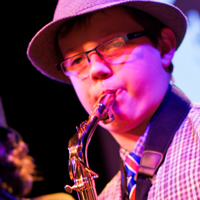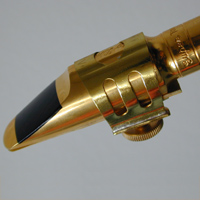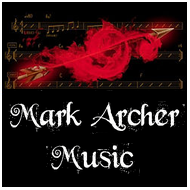 | ||||||||
|
|
|
Mouthpieces Your mouthpiece is the most crucial element in the creation of your sound. Changing your mouthpiece from your starter mouthpiece is the most exciting and radical move. Make sure your ‘chops’ are strong and you are totally aware of the sound that is being produced. The mouthpieces we play and therefore recommend are: From America the metal or ebonite Otto Links and ebonite Meyers. The other one (if you can locate them) are metal British Lawtons. We will also discuss the top end Dave Guardalas too. If you are a beginner and struggling the very best beginners' mouthpiece is a Yamaha 4C. Blowout Sax's, Stan Scott, uses a 7* Metal Otto Link on his Borgani tenor (the Joe Lovano model). It offers a punchy, strong tone with plenty of warmth. Stan reckons it provides more 'focus' and more 'top', making it the preferred choice in funk and similar genres, but that it is also the most versatile mouthpiece around. Craig Crofton, of Blowout Sax, uses an ebonite Otto Link 6* on his Yamaha YSS-475 soprano. Craig says the standard Yamaha mouthpieces aren’t bad but probably not loud enough. I have tried loads of metal ones with soprano - Otto Link metal, Lawton, Berg Larsen etc.. and have ended up believing soprano is best played with an ebonite mouthpiece. I now use an ebonite Otto Link 6* and am relatively happy with that. The Meyer mouthpiece photos live and studio  Craig says the Meyer is the perfect all round alto mouthpiece. It is particularly good for students to start using when they have been playing the sax for over a year. Its open bore design provides a fullness of sound and ease of playing that makes it a perfect choice. Meyers were used by the great Cannonball Adderley and Lou Donaldson. Craig, Stan & Berry all favour the Meyer ebonites on alto sax. Stan says the Meyer 7, which is one up from the Meyer played by the late great Art Pepper, is versatile with a full warm sound, as demonstrated on this live soundbite from Stan.
Craig says the Meyer is the perfect all round alto mouthpiece. It is particularly good for students to start using when they have been playing the sax for over a year. Its open bore design provides a fullness of sound and ease of playing that makes it a perfect choice. Meyers were used by the great Cannonball Adderley and Lou Donaldson. Craig, Stan & Berry all favour the Meyer ebonites on alto sax. Stan says the Meyer 7, which is one up from the Meyer played by the late great Art Pepper, is versatile with a full warm sound, as demonstrated on this live soundbite from Stan.
The LAWTON mouthpieces 
Blowout Sax’s founder and director, Mark Archer, says this mouthpiece, which was made and created by the late Geoff Lawton himself, with its rocket-shaped design, produces a firework of sounds, stunning in volume and ease of playing. The Lawton has a spectacular kick and, with time, a diversity of tone, but overall has a greater brilliance of tone than the Otto Link. Craig says that Lawton gives you a versatile sandwich which can be used for playing anything from rock/funk to jazz. You can still get a puffy sound on the bottom end and sharp sound up top. It has a brilliant rich tone and offers varying degrees of sharpness: * = normal *B = more edge *BB = really edgy Craig also says that you have to be careful if you are changing from an ebonite mouthpiece to a Lawton. It may take you several months to get used to it. You need to have your embouchure well developed to switch to all metal mouthpieces, and this is especially true of a Lawton. Blowout Sax’s Berry Goddard uses a Lawton 8*B mouthpiece on her Selmer model 26 tenor. Jackie Greenwood, of Blowout Sax, uses a Lawton 6 Star BB mouthpiece on her Yamaha YAS-62 alto. The original ones are no longer available new but can be found on Ebay. The other easier to obtain mouthpiece comparable to the Lawton is the Berg Larsen which Mark blew 30 years ago before the Peter Ponzol, which produced a searing powerful sound which is versatile for many types of music. Craig uses an original handmade Michael Brecker Dave Guardala mouthpiece on his a vintage Conn Pink Lady 10 M tenor.  There is a history with Guardala and his rogue dealings however, the mouthpieces are amazing..options are either the above or www.sax.co.uk
There is a history with Guardala and his rogue dealings however, the mouthpieces are amazing..options are either the above or www.sax.co.uk
TRANE (available only Handmade): This new Model is designed by Nadir Ibrahimoglu for the vintage sound. Trane has now the darkest sound of all Guardalas. It has tip opening 7* (106) a very large bore and a very small baffle. This mouthpiece combinates the “ Florida ” sound with the Modern Design of the Guardala Mouthpieces. Trane is for players who prefer the darkest sound with easy playing. New Crescent & Crescent: Crescent model was designed with the “Coltrane” sound in mind. The sound of this mouthpiece is reminiscent of the John Coltrane album “Crescent” circa 1963. It features a slightly smaller tip opening (106) than other models. It had a large bore and a slight baffle. End of 80ies Dave designed for PMS a Crescent model with a little larger bore for the dark Bebop sound. This New Crescent model should be used by those players who prefer a dark sound. BM (B.Marsalis)(available only Handmade): An exact replica of the mouthpiece played by Branford Marsalis, it has a large bore / chamber and a moderate baffle. It’s ideal for playing mainstream Jazz with the “harder” sound Branford is known for. MB (M.Brecker Mark I) (available only Handmade): This model is the exact replica of the mouthpiece that Michael Brecker used. This model incorporates a moderately high baffle with a large bore. It is less bright than the Studio Model but brighter than the Traditional Model. It should be used for the Mainstream Jazz. Tip opening 115” (8*). N.I.FUSION: This new Model is designed by Nadir Ibrahimoglu for the ultimate Fusion Sound. It is a “Fusion” of the most popular Guardala Tenor sax mouthpieces: Studio + MB + MB II. The baffle is a combination of Studio and MB II, the chamber is a combination of MB and MB II. N.I.FUSION is available in three different tip openings: #7 (108”) , #8 (114”) and #9 (118”) and as LT Handfinished and as Handmade. This mouthpiece is perfect for Fusion-Jazz but can be used for Contemporary/Pop and Rock. MB II: This model is a hybrid of the Studio and the original Brecker model. This mouthpiece has the high baffle of the Studio model with the large bore of the original Brecker model. This gives you increased volume and brightness with greater ease of playing. It is great for Contemporary/Pop, Rock and Jazz. The tip opening is 114 (thousandths of an inch). The Studio:  (#116”)This is the third brightest of the Tenor models. It has tremendous volume with unexcelled resonance and a full and balanced frequency response. This model incorporates a high baffle with a medium bore. The sound of this model is clearly demonstrated by Michael Brecker in the period 1979-1982 ( Brecker Brother´s Band ). The Studio can be used for all types of music a “ Studio Man “ would encounter, from Fusion to Swing, hence ist name. This is our middle of the road mouthpiece.
(#116”)This is the third brightest of the Tenor models. It has tremendous volume with unexcelled resonance and a full and balanced frequency response. This model incorporates a high baffle with a medium bore. The sound of this model is clearly demonstrated by Michael Brecker in the period 1979-1982 ( Brecker Brother´s Band ). The Studio can be used for all types of music a “ Studio Man “ would encounter, from Fusion to Swing, hence ist name. This is our middle of the road mouthpiece.
The King/R&B: This is the second brightest and compact of the Tenor models. It is patterned after the sound of King Curtis – a combination of the Detroit & Texas sound. This mouthpiece incorporates a high baffle and a small chamber. This mouthpiece can be used for the same types of Music as the SuperKing/R&B. For players who are acquainted with high baffle small bore mouthpieces, it can beused for Mainstream BeBop, Jazz and Contemporary/Pop. Tip opening is 116-118 The SuperKing/R&B: This mouthpiece is The King/R&B with a higher baffle. The chamber and the bore are altered to make a better match with the higher baffle. It should be used when the demands for brightness and power are extreme. It is ideal for Music that contains electric instruments that must be competed with, such as Fusion, and Rock’n’ Roll and Contemporary/Pop. This is the brightest of the Guardala mouthpieces. Tip opening is 119-120. Patches BG produce black patches that some saxophonists like to put on their mouthpieces. The advantage is your two front teeth are then resting in the same place every time you blow - these are especially good for metal mouthpieces as the taste of metal on your teeth ain't always pleasant. Replace them when you begin to taste metal! Try different thicknesses to see what works for you. BG mouthpiece patches I’ve been getting from www.sax.co.uk. |
|

|

|

|

